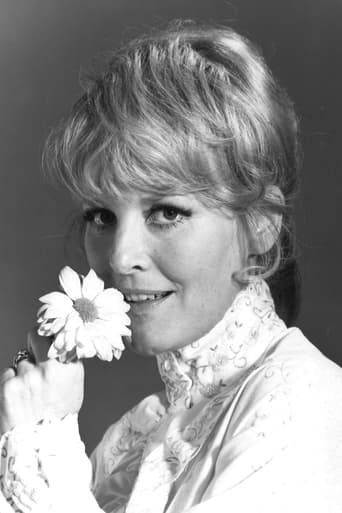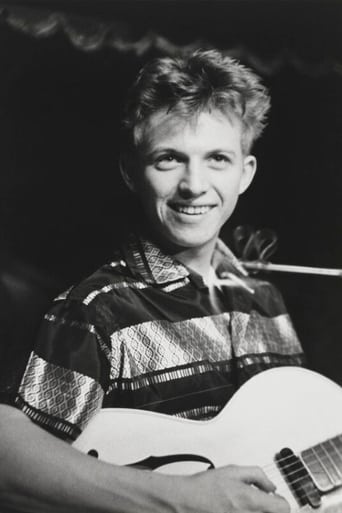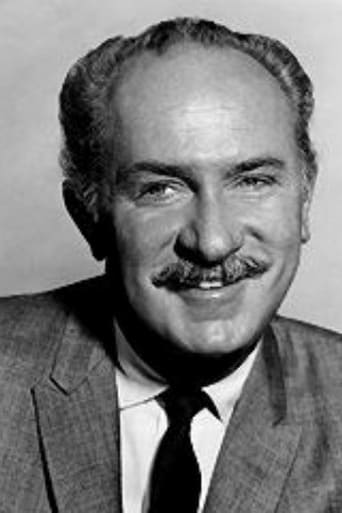ChanBot
i must have seen a different film!!
Limerculer
A waste of 90 minutes of my life
Lollivan
It's the kind of movie you'll want to see a second time with someone who hasn't seen it yet, to remember what it was like to watch it for the first time.
Janis
One of the most extraordinary films you will see this year. Take that as you want.
SimonJack
Fred Astaire was 69 years old when he left Glocca Morra as Finian McLonergan to put down roots in America. In "Finian's Rainbow," he gives us his swan song as a hoofer. It's nothing like the dazzling, sometimes complicated, yet always seemingly effortless routines he delighted audiences with through the mid-1950s. But, the lighter, softer footwork here still exudes the magical touch of the master of dance.Astaire is joined by a superb cast for this fantasy musical that also departs from the usual stage settings for Astaire routines. Here, the dancing, songs, and story take place mostly in the outdoors of the village of Rainbow Valley and its nearby woods. Finian has come with his daughter, Sharon, to plant the pot of gold he snatched at the end of a rainbow in Ireland. He came to bury it in Missitucky which is near Fort Knox. Planted next to America's gold deposit, the pot is sure to grow – or so thinks Finian. And he wants to get his gold buried before the leprechaun that is in pursuit catches up to him. Petula Clark is superb as Sharon and Tommy Steele is fantastic as Og, the leprechaun.In Rainbow Valley, they are welcomed by the townsfolk and join in their party after helping stave off the sheriff's attempt to auction off the village property for back taxes. Senator Billboard Rawkins wants to acquire all the land. Don Francks plays Woody Mahoney, who soon woos Sharon. A movie newcomer, Barbara Hancock, plays Susan the Silent. She is a ballerina in her first part in a movie, and she dances her heart away in this film. Keenan Wynn plays Senator Rawkins. Al Freeman Jr. plays Howard, a researcher and partner with Woody in a project to develop a menthol tobacco plant. All of these lead characters and supporting actors are backed up by a troupe of dancers and singers who perform or support some wonderful musical and dance routines in the film.The story and music come from a book by E.Y. "Yip" Harburg and Fred Saidy. Harburg wrote the lyrics for all of the songs and Burton Lane wrote the music. "Finian's Rainbow" was first made into a staged musical on Broadway in 1947. Five of the songs became hit tunes that year. The most popular and well known number was "How Are Things in Glocca Morra." Ella Logan first sang it on stage in the 1947 musical. The other four hit tunes were "Old Devil Moon," "If This Isn't Love," "When I'm Not Near the Girl I Love," and "Look to the Rainbow." Columbia Records was the first recording studio to issue an album with all the songs from a musical. The music of Finian's Rainbow was also the first LP issued by Columba, in 1947. The original Broadway production ran for 725 performances. But it took 20 years before a movie studio would take on the project. Before the Civil Rights Act of 1964 and the beginning of the end of racial segregation of all kinds, a story like that of Finian's Rainbow was considered too hot to handle beyond the Broadway stage.The story and film have aspects that take segregation head-on. They also have considerable humor that mock race stereotyping. Most of this is done with humor that people today can appreciate and enjoy. In that regard, the film strikes an historical chord for its portrayal of racial bigotry and prejudice that still prevailed well past the middle of the 20th century in America.While the name Yip Harburg may not be recognizable to most people in the 21st century, a lot of his tunes are well known today and likely will be long into the future. Harburg wrote the lyrics for all 18 of the songs in "The Wizard of Oz." "Over the Rainbow" won the 1939 Oscar for best original song and became Judy Garland's theme song. It became one of the most enduring standard songs for movies through the 20th century. Harburg's original songs or reprisals of his tunes have been in 385 movies through 2015.The movie does have some unique and some odd things about it. One that is both of these is its series of scenes in the opening while the credits are running. The scenes are beautiful panoramas mostly of scenic or historic places in America. They show Finian and Sharon (or their stand-ins) walking over hills, through fields, down steep mountain trails, and high above vistas that show many American trademarks. We see the Golden Gate Bridge at San Francisco, Monument Valley in Arizona, Mount Rushmore in South Dakota, the Rocky Mountains or Cascade Mountains, a boat ride on the Everglades, and more. While the scenery is excellent, it also doesn't make sense. Finian came from Ireland and started walking across America from the West Coast? Zigzagging up and down across country? Even with its hit songs, and an overall entertaining production, "Finian's Rainbow" doesn't have the punch that the more elaborate musicals have had. Still, the mythical Glocca Morra will likely live on from the tune itself. And the movie is a fine and fitting end of the musical film productions of a great cinema dancing legend and, as it turns out, the near end of musical films by the top British female singer of record. Astaire appeared in just a few more non-musicals and Clark sang in only two more films. But we all can still enjoy the dancing and singing of Fred Astaire and Petula Clark in the number of their recorded works that will be available for decades to come.
MartinHafer
Finian (Fred Astaire) and his daughter (Petula Clark) arrive in the fictional Southern American state of Missitucky. There, Finian encounters several problems--including a leprechaun who wants his pot of gold back, a racist senator and the need to marry off his daughter. How all these are worked out are something for you to discover if you decide to see the film."Finian's Rainbow" was a very successful play back in 1947. However, because it directly addressed racial prejudice, studios passed on making a film out of it. Efforts to have the play 'cleaned up' to please a wider (in other words, more prejudiced) audience were in vain, as the playwright refused (justifiably) to sanitize the film. However, by 1968, its themes of racial harmony and bigotry were much more acceptable and timely--and so the film was finally made. In this sense, the film was very timely. HOWEVER, when it came to the music, by 1960s standards it was VERY corny. In particular, the songs sung by the leprechaun were amazingly bad--with some horrible lyrics. But, the bad lyrics weren't confined to his songs but occasionally popped up among other cast members (such as Clark who sang a line that went 'Zsa-Zsa Gabor-ah' and later when Astaire sung about 'dames'). Because of this, a bit of trimming would have greatly improved the film--making it far less dated and silly. Plus, the bad moments really detract from its central message of racial harmony--a laudable theme that occasionally got lose among the silliness. It also meant a few too many songs--a problem that can hurt any musical. Overall, this can truly be called a mixed bag. While it stars Fred Astaire and I LOVE him in films, this just isn't all that great a film. A time-passer--and that's about all--even though it has some nice moments.By the way, for years Fred Astaire was NEVER shown dancing in films unless ALL of him was shown. He felt it detracted from the dancing if he wasn't shown from head to toe. Well, he did NOT negotiate such a contract with the folks making "Finian's Rainbow", as he DOES dance and you don't see him from head to toe in songs such as "The Idle Rich". Perhaps this was due to his age and his slowing down a bit--which might explain why this was his last musical.
mike48128
Until TCM ran it, I never saw it complete. My old local TV station used to cut it to pieces for "time", I thought. Now I know they were uncomfortable with the subject matter. This movie is not "PC." It makes fun of racism in much the same way of Mel Brooks' films: with outrageous comedy. Keenan Wynn is marvelous as the white senator who gets "wished" black. The mint tobacco crop won't burn, but it puts out fires! Both Tommy Steele and Petula Clark (who is surprisingly good) are perfect. Fred Astaire, in his last musical, can still dance at age 69. To his credit, Francis Ford-Coppola does not over-direct. Harburg's lyrics are great (oh, yes, you remember that other film of his "The Wizard of Oz"?) although slightly dated; as this Broadway musical is from 1947. Several memorable songs, including: "That Ole Devil Moon","Look to the Rainbow", "When I'm Not Near the Girl I Love, I Love the Girl I'm With". This film is a fantasy and a fable. It even includes a miracle: a "mute" finds her voice. (Barbara Hancock as "Silent Susan" is a beautiful dancer.) A fairy tale, this film will be way too sweet for some, but it is a better musical than anything produced today. Best seen on a big screen because of its lush outdoor settings and cinematography. Some reviewers think this film is "deeply flawed" because of it's racial humor. It's because of people with "attitude" like that that no one can buy a (legal) copy of "Song of the South".
aimless-46
"Finian's Rainbow" (1968) is one of the few films I saw three times in the theater, and since repeat viewings are normally not my thing it must have made some connection or maybe I just enjoyed watching Barbara Hancock dance. Despite this I agree with most of the critical comments about portions of the film.Unfortunately it was assembled as a 145 minute "roadshow" musical; these were overlong spectaculars which depended less on the charm of the performers (think 1930's) than on pre-sold event marketing (unnecessary, pretentious, overscale, and distracting production values; souvenir programs; etc.). Right around the time of its release these mega-productions were leading many of the studios to financial ruin. Warner Brothers took a hit from this one; box office was bad but fortunately Coppola worked cheap and had cranked this out on the back-lot with a relatively modest budget.Trim about 30 minutes from the film and you would have a much better production. There is a lot of stuff here that is supposed to be fun and just doesn't make it. Fortunately there are some real gems sandwiched throughout the film.Think bi-racial "Lil Abner" (1959) with a touch of "The Wizard of Oz" (1939). The Oz connection comes from lyricist E. Y. Harburg, the guy who gave us "If I Were the King of the Forest". There are enough such silly songs to make up for toughing out the musical clunker moments. Tommy Steele absolutely shines doing this material (insert Bert Lahr here) .Nothing wrong with the performances of Fred Astaire or Petula Clark either. And its not just his dancing and her singing, they both achieve excellent characterizations. Astaire at 70 does not look much different facially than Astaire at 30. But this time instead of a physically unlikely love interest he plays a warm old man still chasing a dream, and it's a much better fit. Clark does an excellent Debbie Reynolds and more than holds her own through the production.Unfortunately there is little good to say about the casting of Don Francks as Petula's love interest and Hancock's older brother. Most likely Coppola felt that the film needed a relatively hip looking guy in place of a Gordon MacRae type. But Francks comes off as more of an oily hotshot; the kind of guy who would proposition your 14 year-old sister.The plot has Finian and his daughter coming to Kentucky to bury a crock of gold he has stolen from a leprechaun back in Ireland. Finian believes that he can produce some kind of synergy by getting the gold within close range of Ft. Knox. They end up in a racially mixed Dogpatch named Rainbow Valley, where blacks and whites work side-by-side as tobacco sharecroppers. There is considerable intrigue involving the local racist political hacks, a new strain of mentholated tobacco being developed by a George Washington Carver type (nicely played by Al Freeman Jr.), back taxes on the sharecropping collective, romance, and a leprechaun who is slowly becoming human.Barbara Hancock, a young but quite accomplished ballet dancer, is fetching as "Susan the Silent" (who dances instead of talking). Coppola adds a lot of nice lyrical moments by showcasing her dancing. It is said that Astaire resented her being cast instead of an older dancer he recommended. They are not paired in any number, a failure conspicuous by its absence.The widescreen DVD looks great and the Coppola commentary is surprisingly interesting.Then again, what do I know? I'm only a child.







